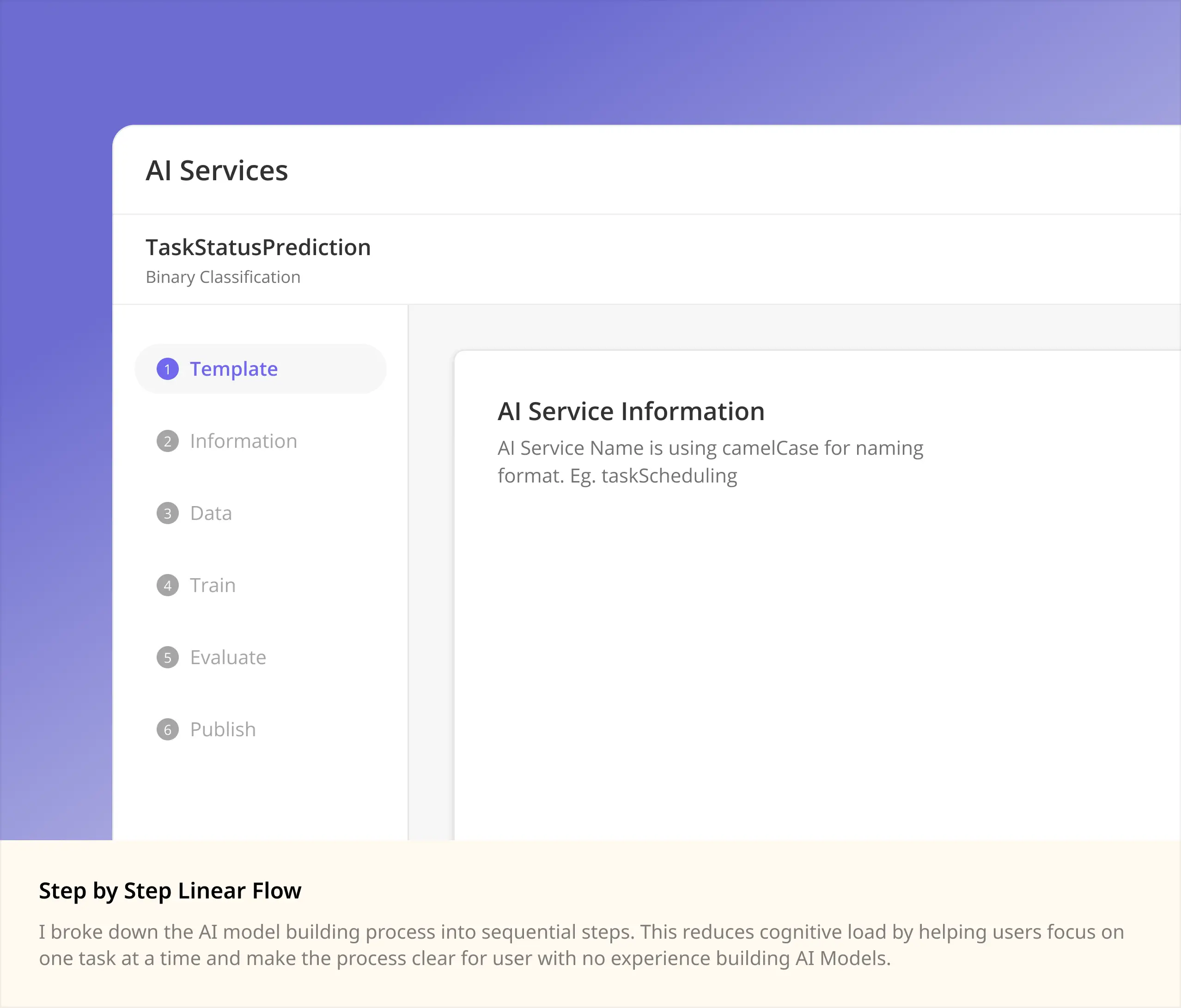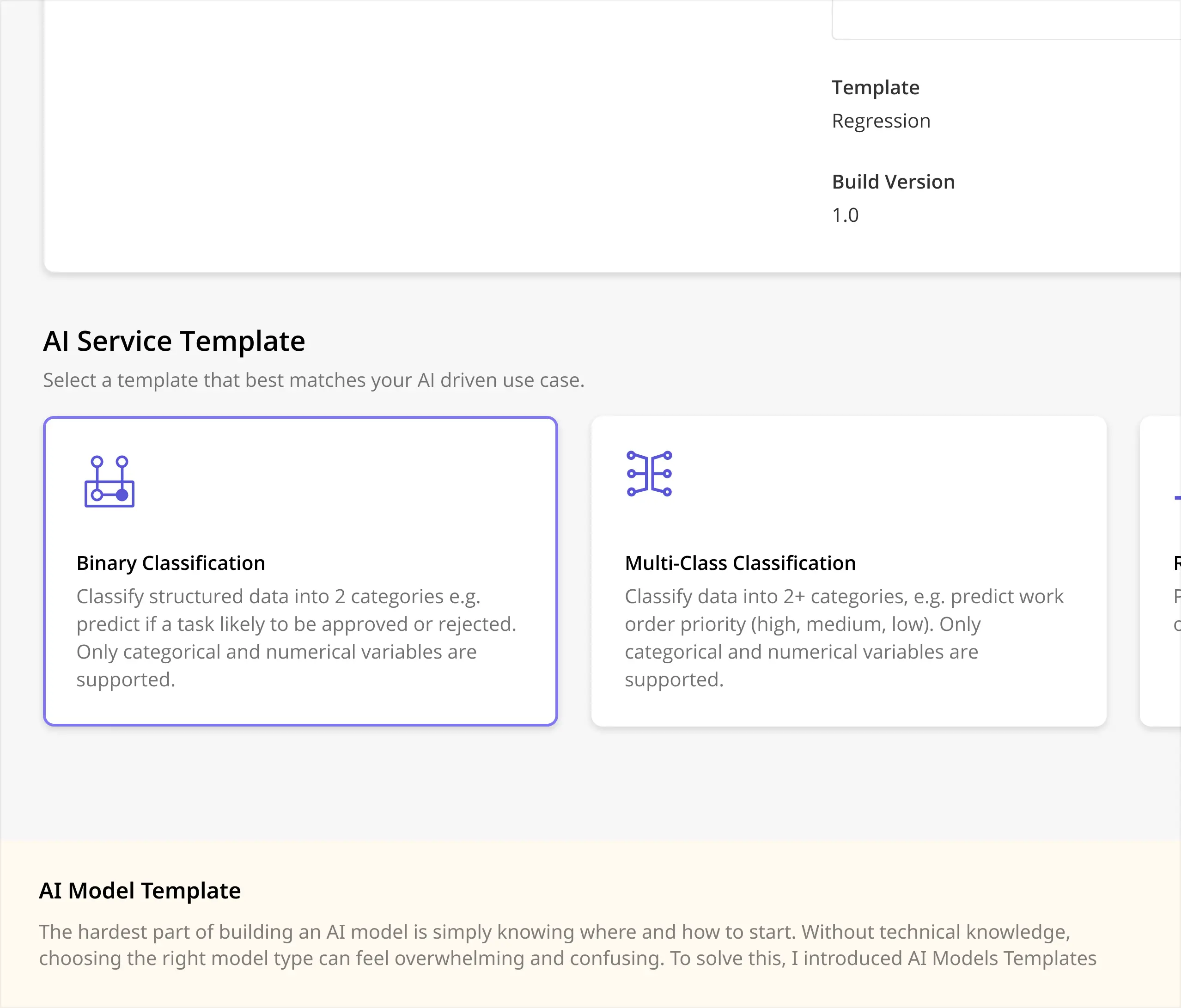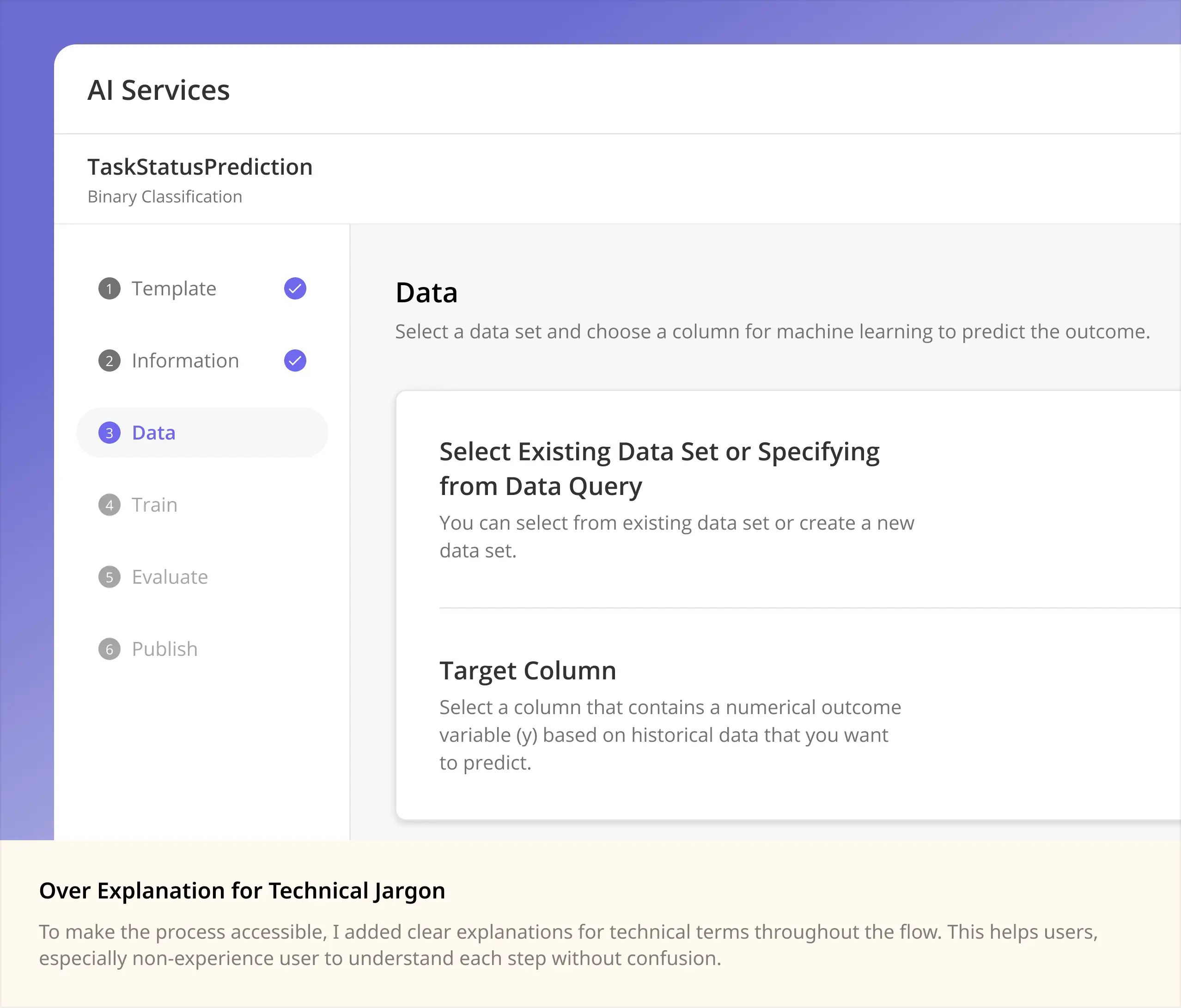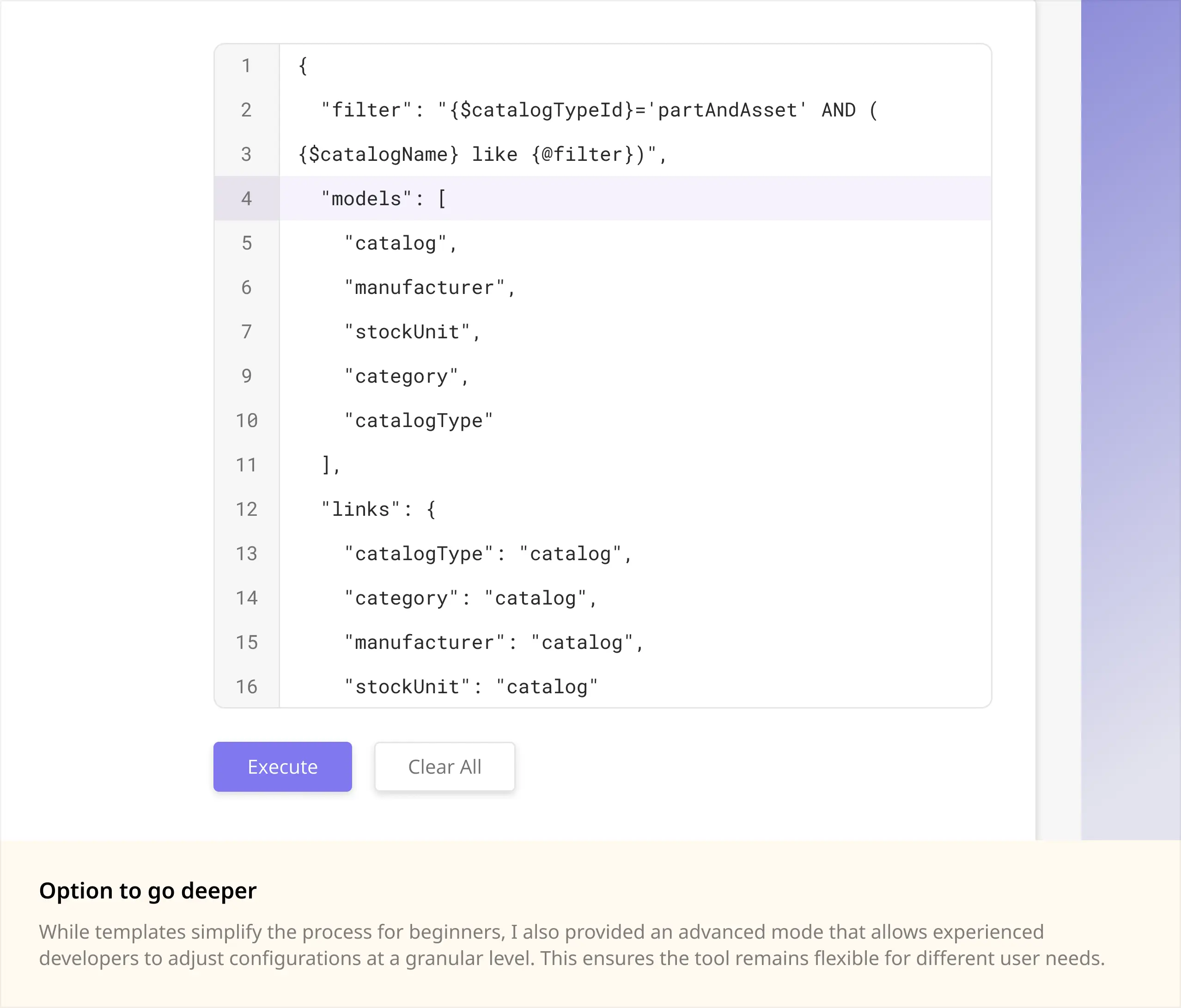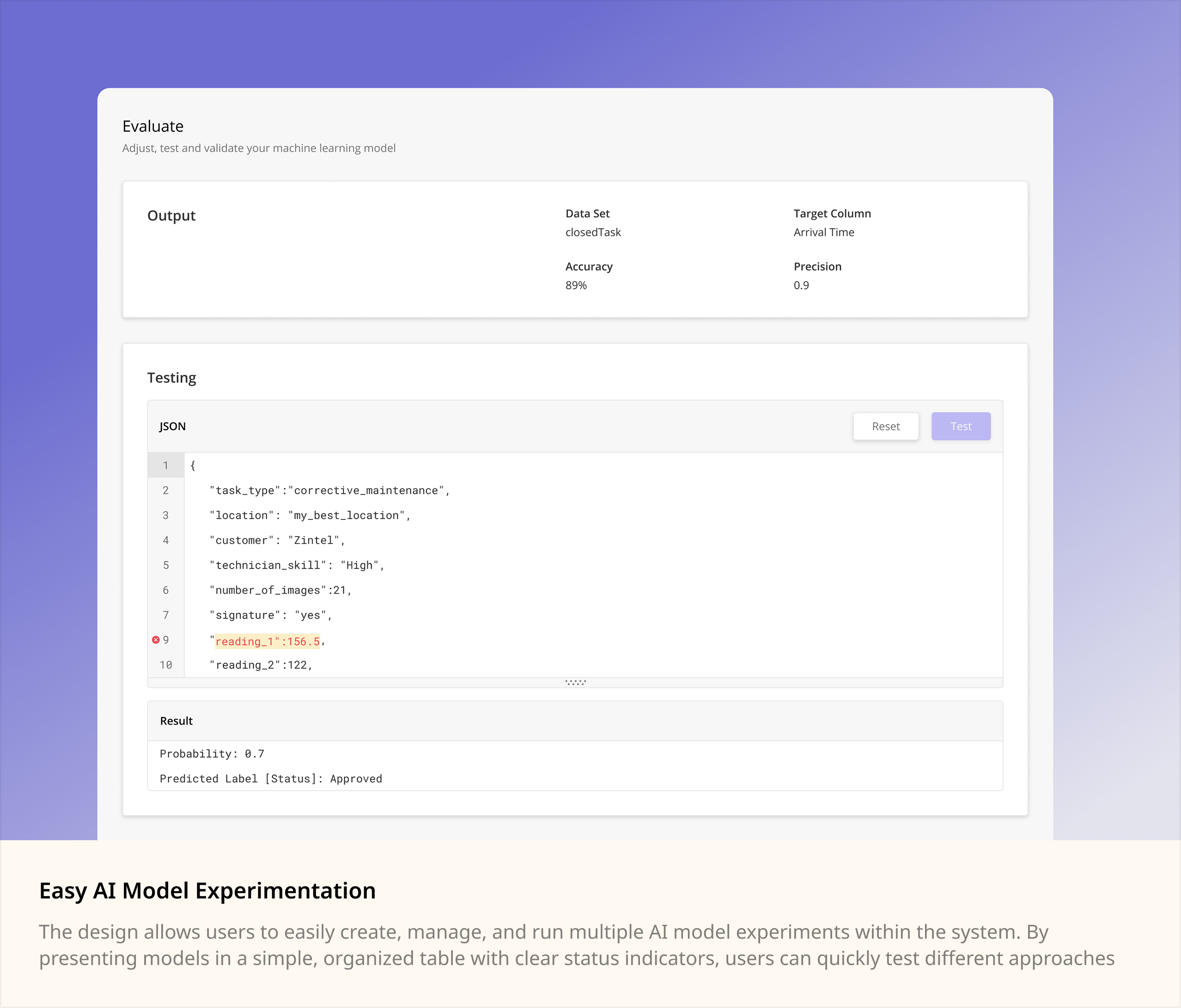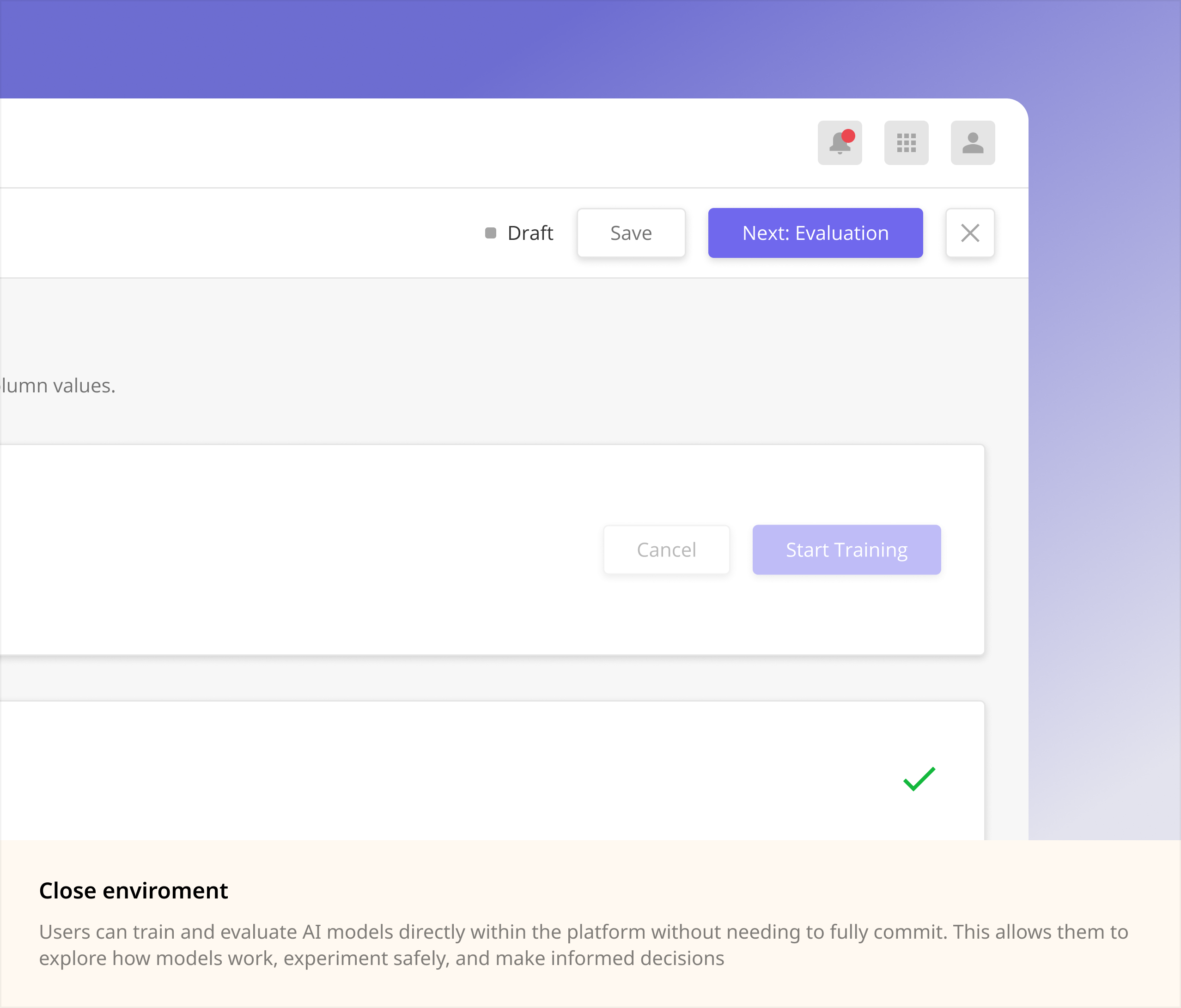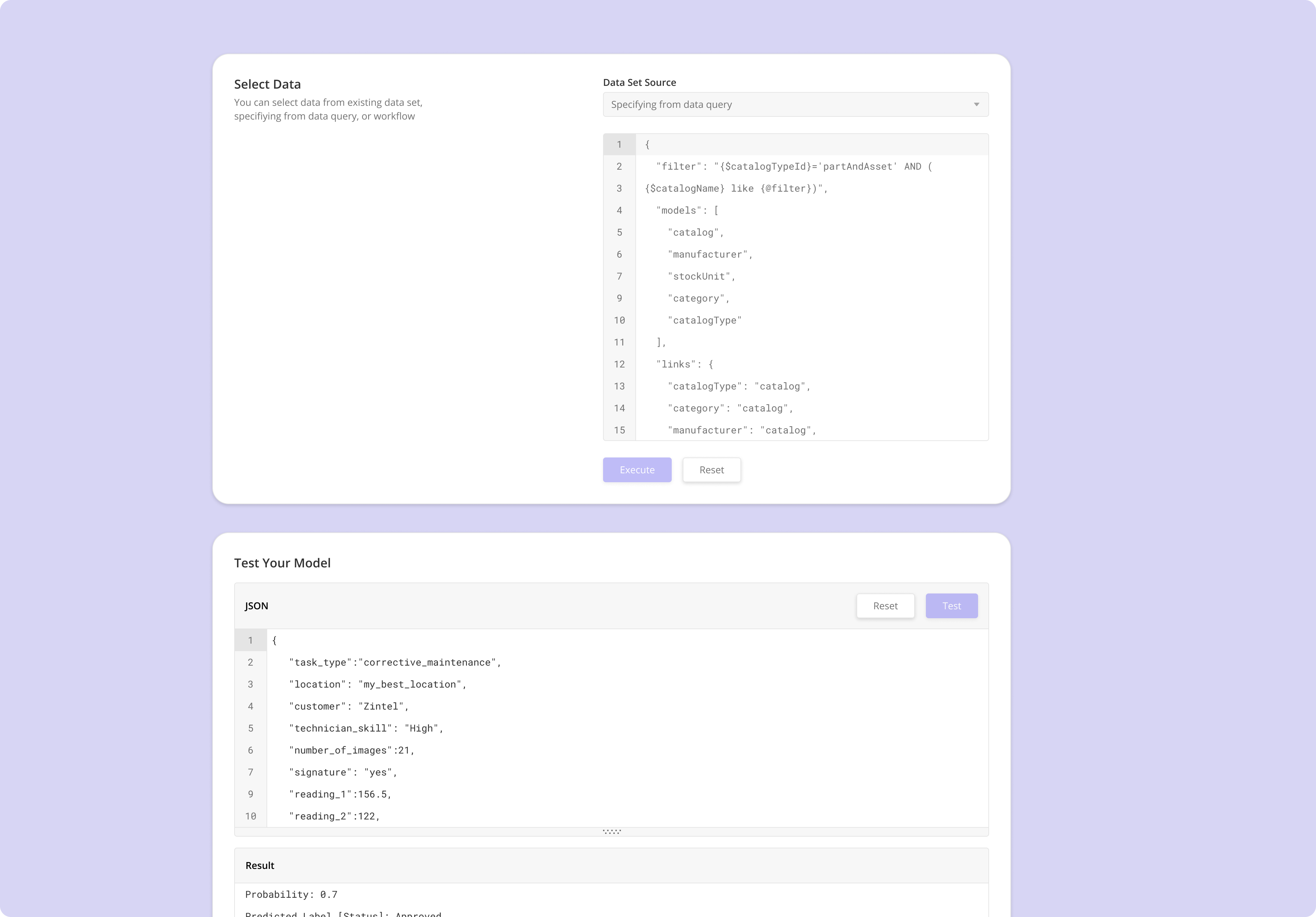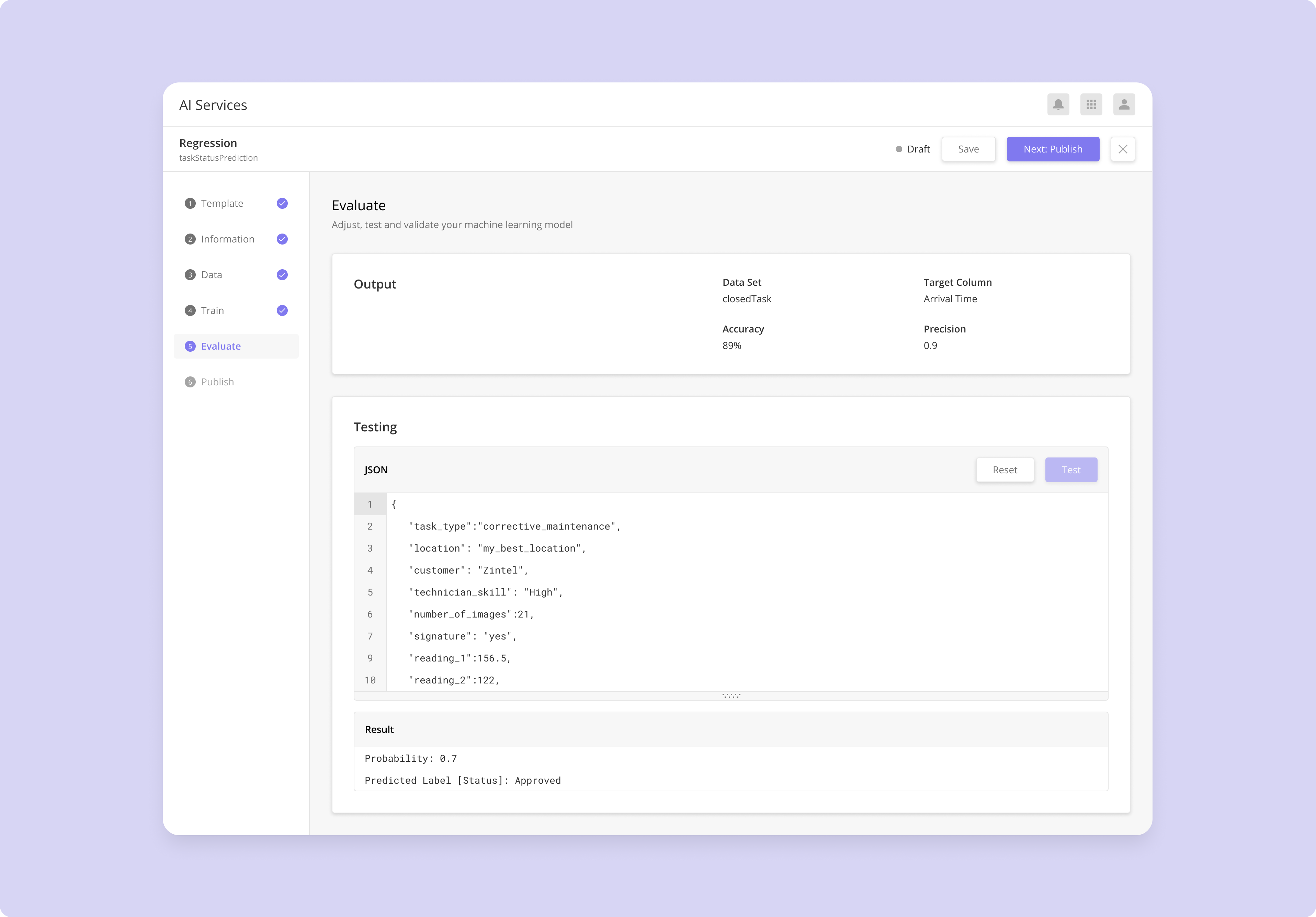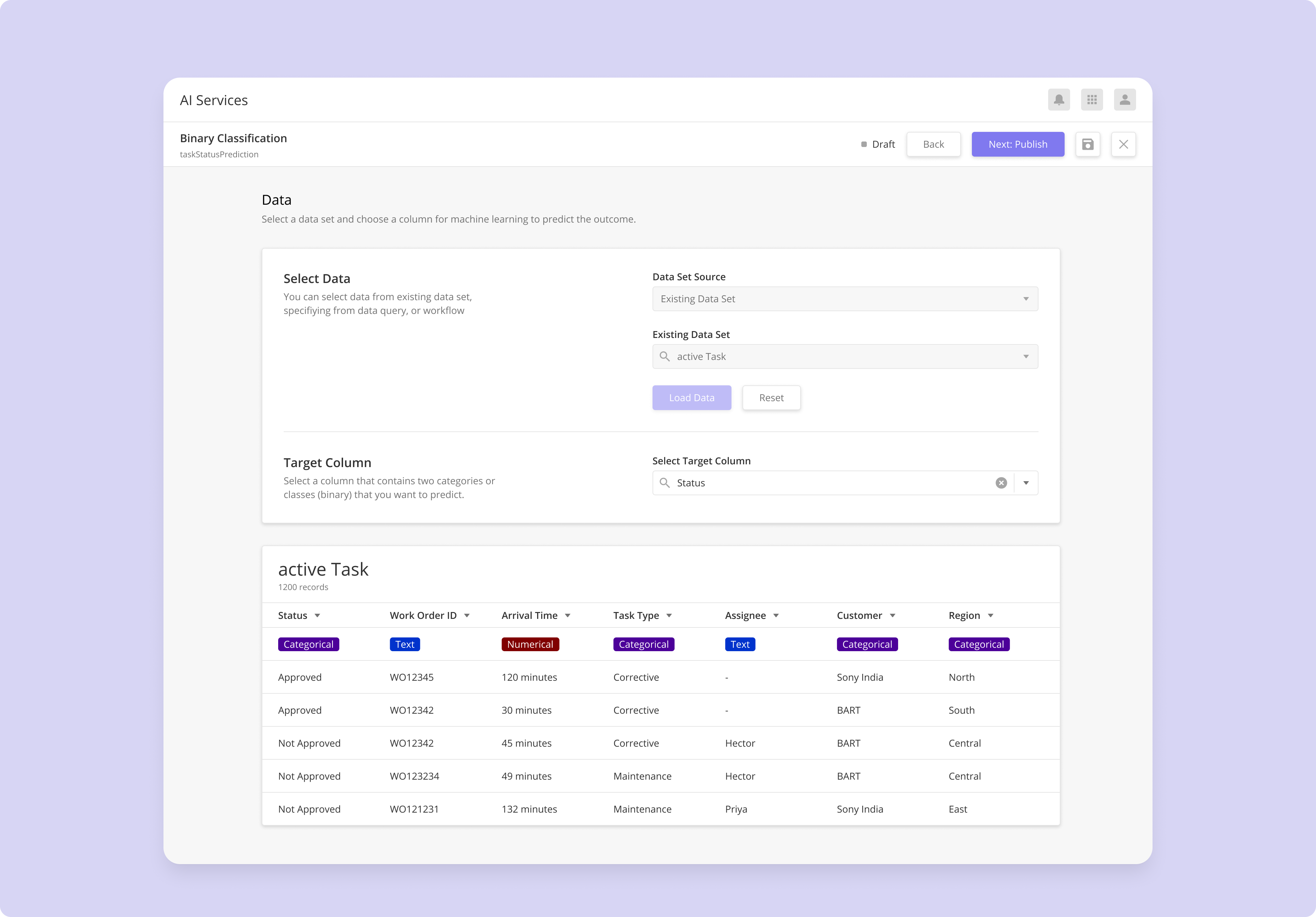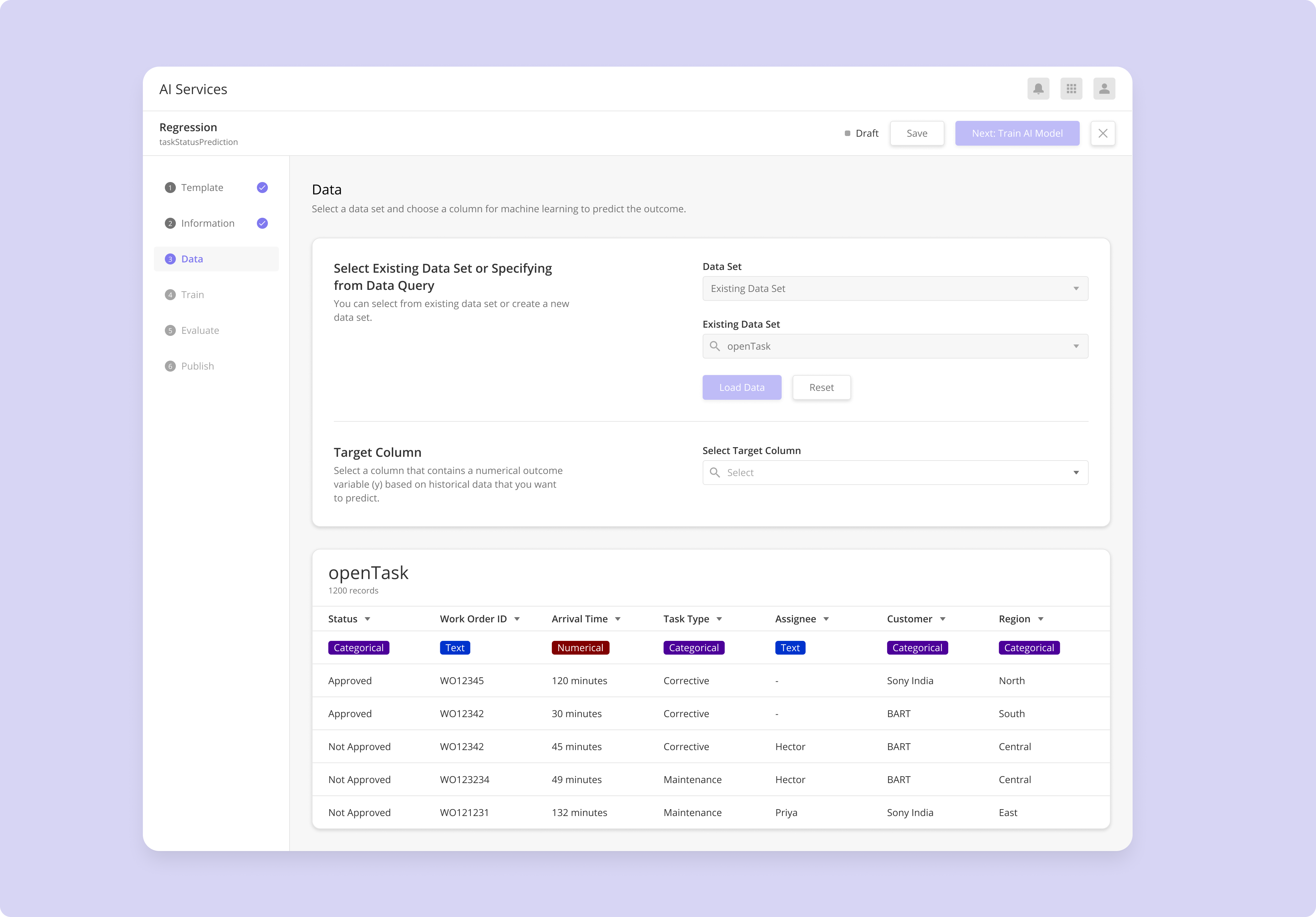design case study
Designing AI Models Builder for Zinier
ROLE
Sr. Product Designer
responsibility
Design research, UX & UI, testing
PROJECT TYPE
UX & UI Designer
ownership
zinier.com
more info
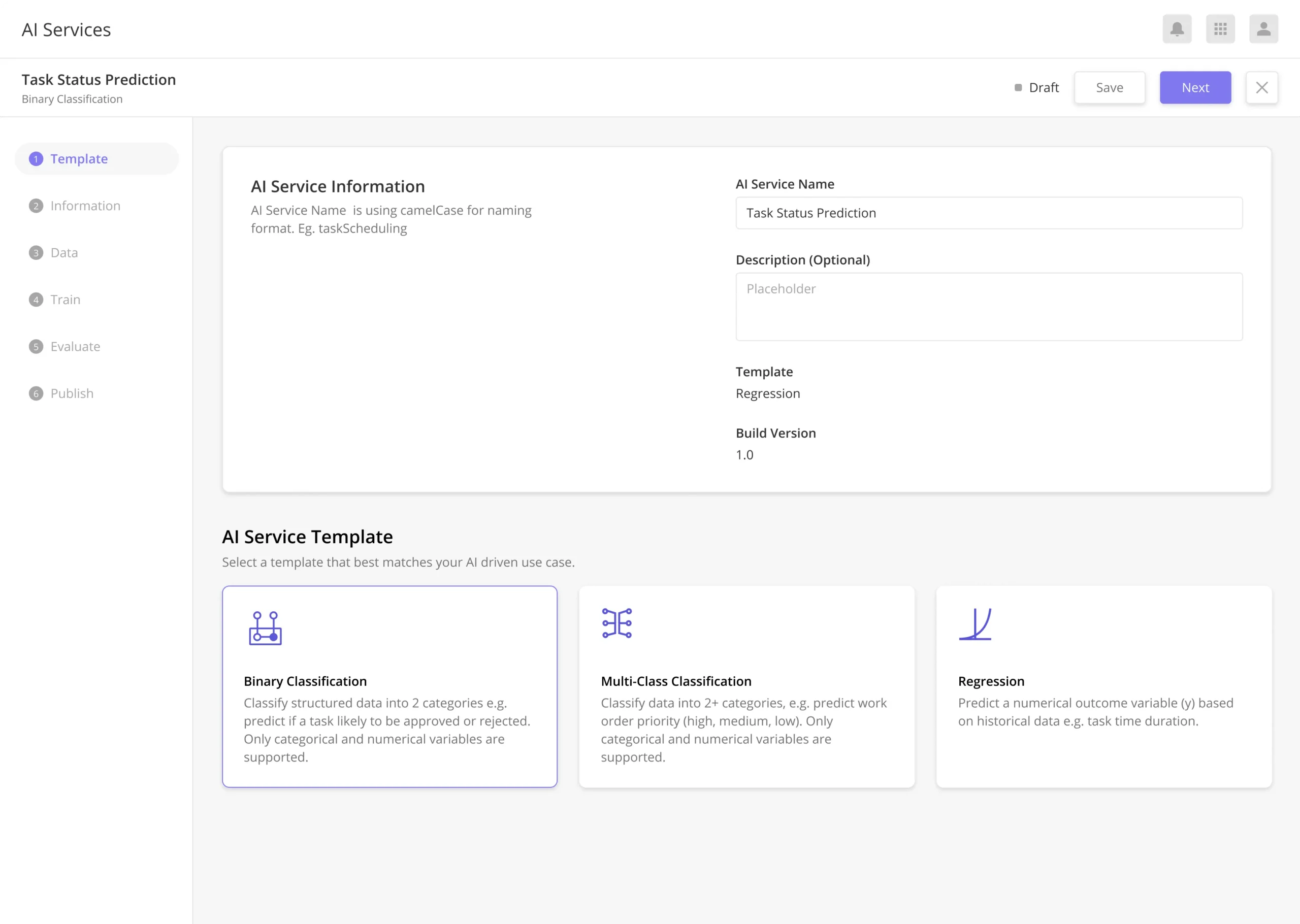
About Zinier
Zinier is field service management platform to manage field service workforce, assets, tasks and customer
Abstract
In this case study, I outline the journey of designing an AI models builder that aimed to simplify the process of creating and deploying machine learning models for both technical and non-technical users.
The study covers the challenges we faced, the research and design process we followed, and the outcomes that resulted from an iterative, user-centered approach.
Project Background
A few years ago, I worked on a project to develop an AI models builder, a tool designed to make machine learning process is accessible without requiring deep technical expertise.
This project was born out of the as starting point to make Zinier platform focus on automation.
Target Users
- Novice users: Employee with minimal technical experience.
- Developers: A professionals who required a flexible environment to train and experiment with machine learning.
Business Problems
Technical Complexity
Process of building AI Model required extensive technical knowledge of machine learning.
Resource Constraints and Expensive
Many business lacked the resources to hire specialized AI engineers or train their engineer to have skill in machine learning.
Inefficient Workflows
The process of building AI Model is highly technical, making experimentation and iteration time consuming.
PROJECT Goal
Zinier want to build an AI Model builder that is accessible for businesses of all sizes while improving efficiency in model training, deployment, and easy to implement.
Preliminary Study
AI Model Crash Course
The project began with a deep dive into AI models, as I was initially unfamiliar with how they work and how the data training process operates. With guidance from Zinier’s AI experts, I spent three days studying the fundamentals while also sketching potential solutions and wireframes.
What is AI Model?
An AI model is a program or algorithm trained on a dataset to recognize patterns so it can make decisions, suggestion or perform specific tasks without human interaction. It is the core engine behind most artificial intelligence applications.
In Zinier, the AI model is built using data collected from the platform, such as task completion times, the number of work orders completed by technicians, and other operational metrics. This data is then used to predict future outcomes, enabling suggestions and potentially provide automation to improve efficiency and decision-making.
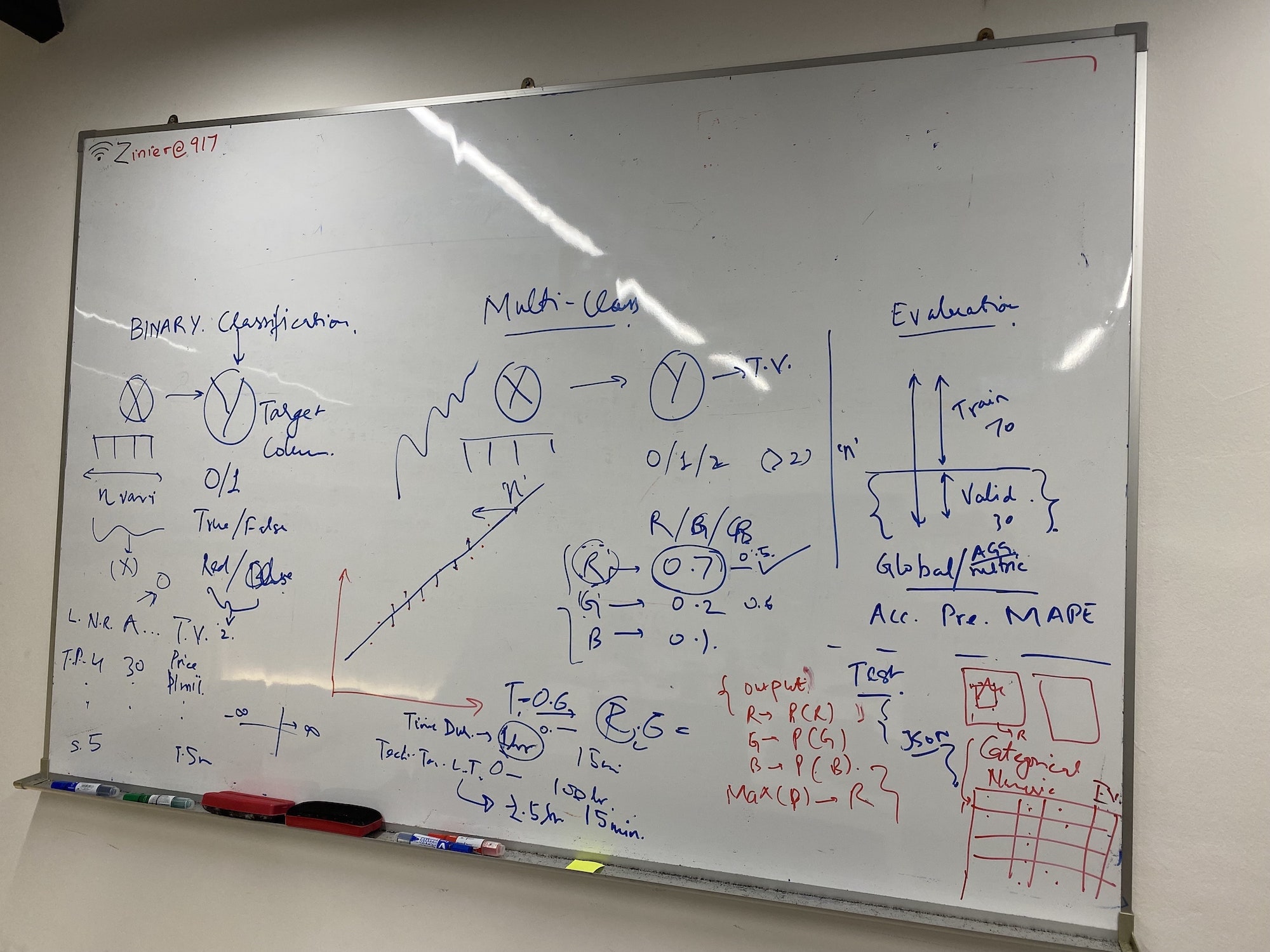
AI Model Crash Course
Research & Discovery
User research
I began spoke with few of potential users, from CTO, developers team and Zinier implementation team. I want understand their experience with other AI model tools and how deep is their knowlege of machine learning.
Some key insights emerged:
- For many users, machine learning are an abstract and intimidating concept, especially for those without prior experience.
- There was a strong desire to simplify the AI model-building process and make it more accessible to non-experts.
- Many users were unclear about the actual need for AI models and were concerned about how to integrate them into their existing workflows.
Competitive Analysis
I also look other AI Model development tools to identify gaps in the market and understand best practices in UI/UX design for technical platforms.
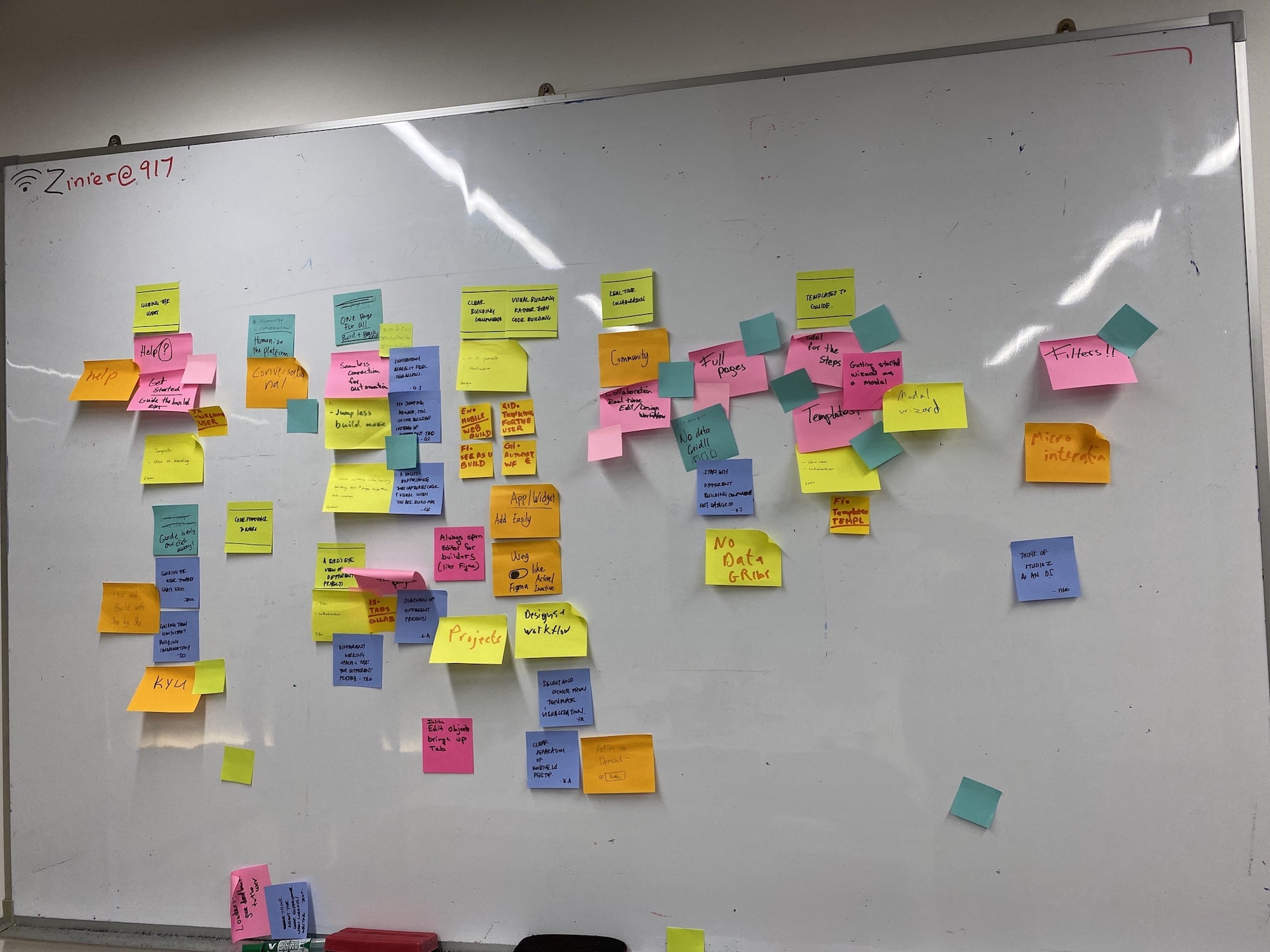
User interview synthesizing
Early Prototype
User Testing
I created a prototype to map out the user flow based on the key insights we gathered earlier. This interactive prototype was tested with a group of developers to validate the approach and gather feedback.
Some key takeaways from the user testing:
- While the prototype helped users understand the overall process, there was still a strong need to streamline AI model development, especially for those with little to no experience in AI or machine learning.
- Users highlighted the importance of having clear feedback and to avoid confusion during the process.
- Many struggled with understanding technical jargon.
Low fidelity prototype using Zinier existing design components
Design Exploration and Handover
Keep it Simple!
The design exploration focused on simplifying the AI model builder process. The UX had to help users with understanding each step clearly, reducing cognitive load, and guiding them from start to finish without overwhelming them.
Every interaction, visual, and piece of microcopy was designed to make the process feel approachable, intuitive, and frustration-free, even for users with little to no background in AI.
Collaboration with Developers
From the feedback, I began refining the solution and worked closely with the engineering team to ensure the design was not only user-friendly but also technically feasible.
This collaboration was key in finding the right balance, keeping the interface simple and accessible for beginners, while supporting the advanced functionality needed by expert users.
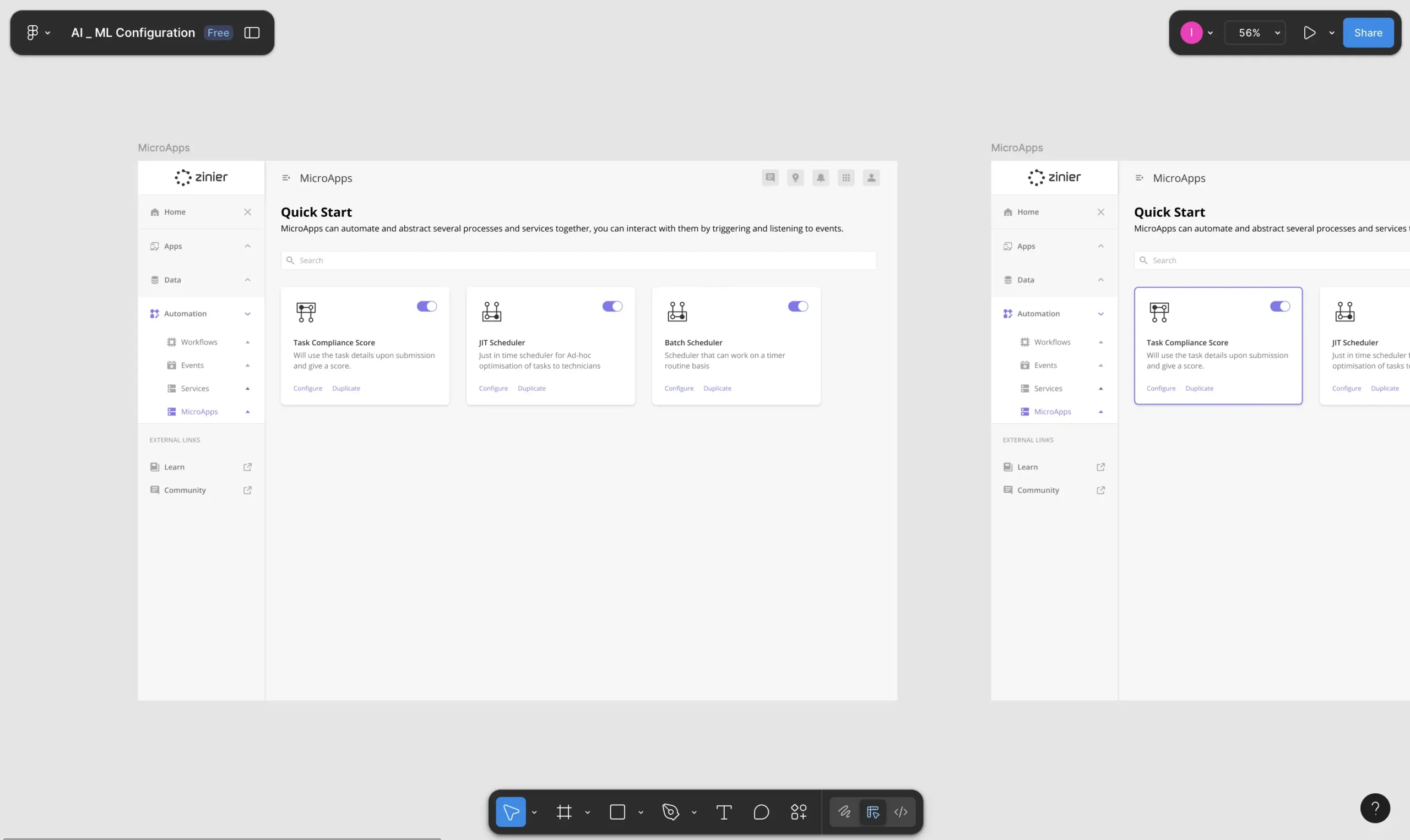
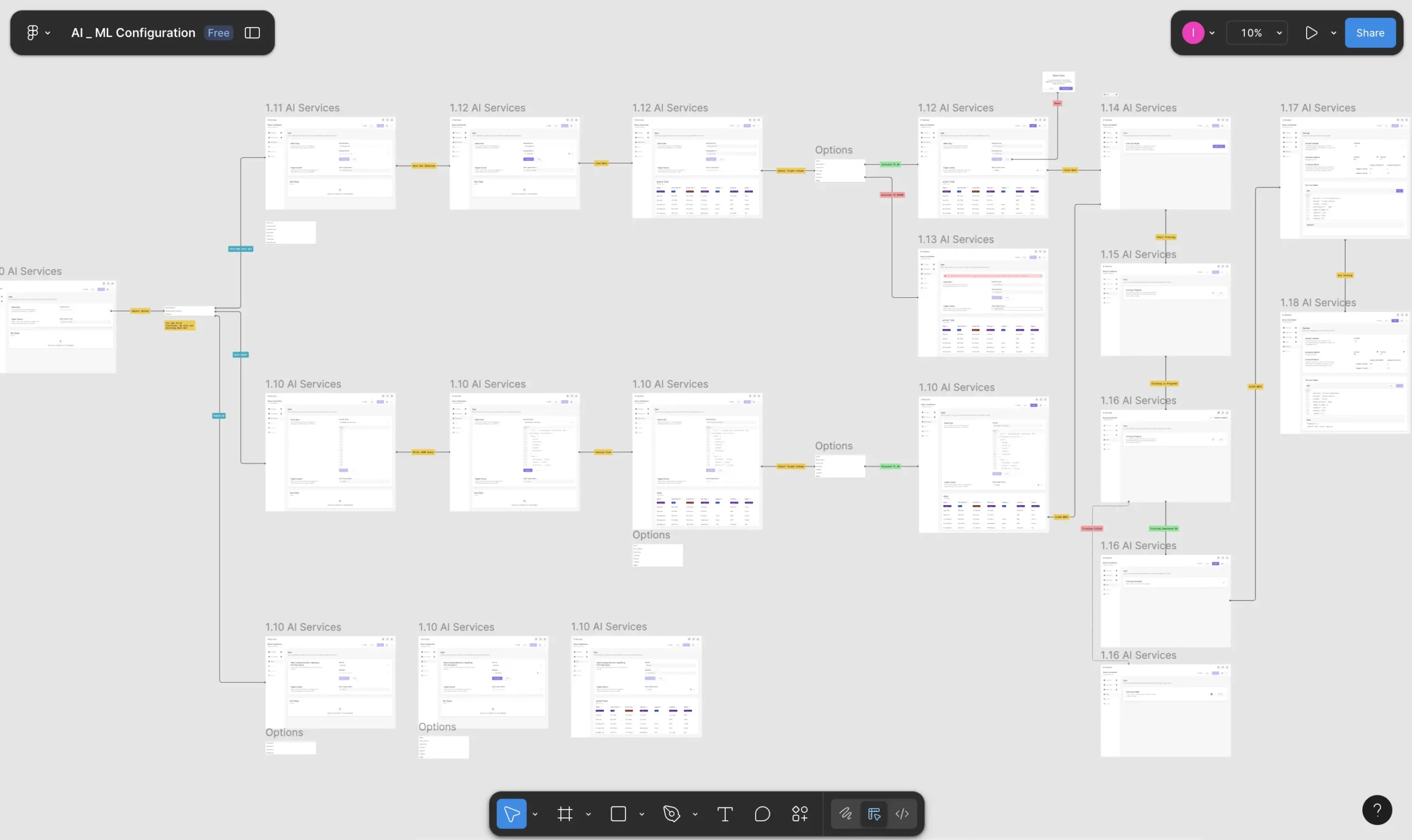
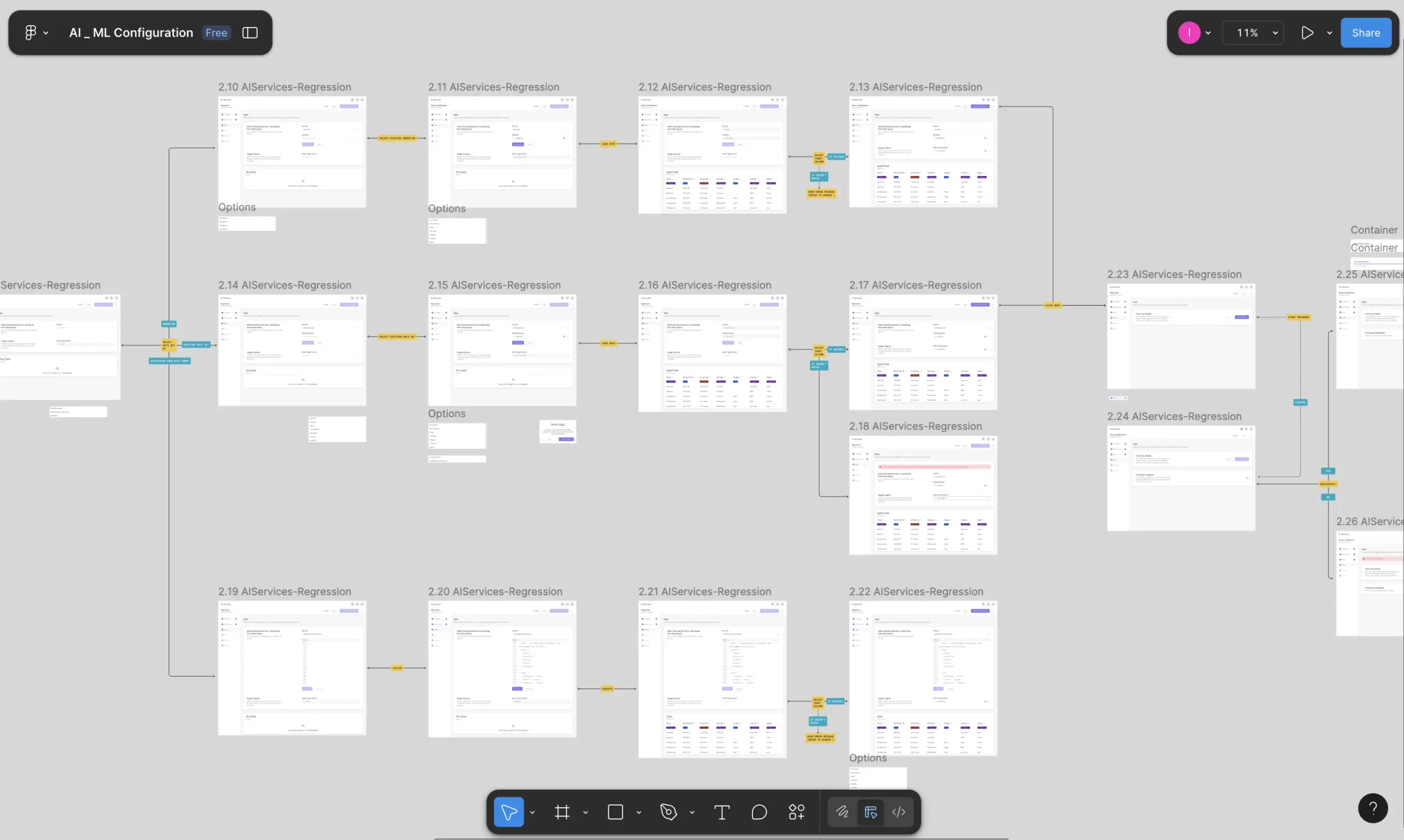
Key Solutions
Implementation and final design
Balancing Complexity and Simplicity
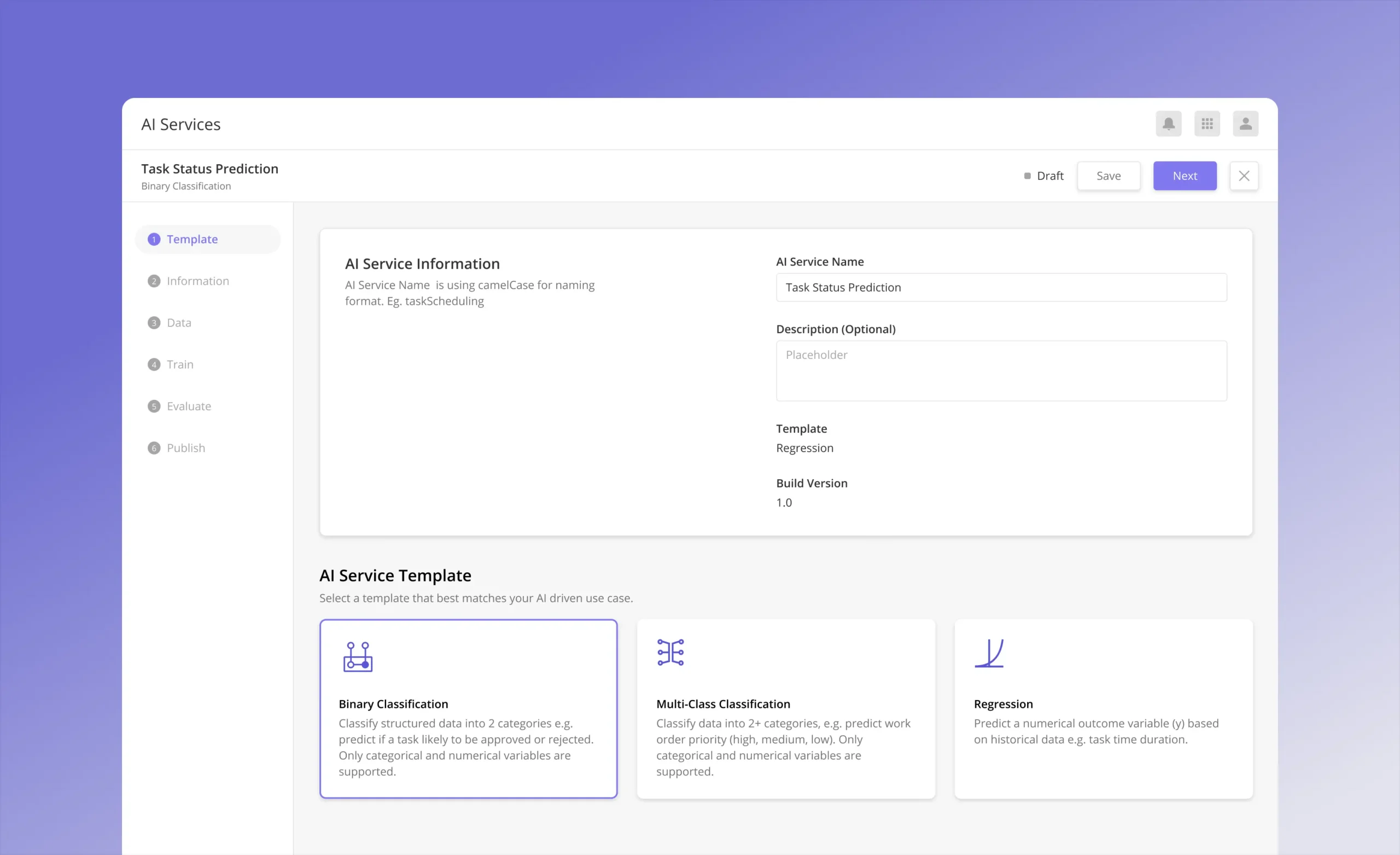
Plug and play:
The model seamlessly connected to various components within the ecosystem with a single click and publish and it will ready to give recommendation.
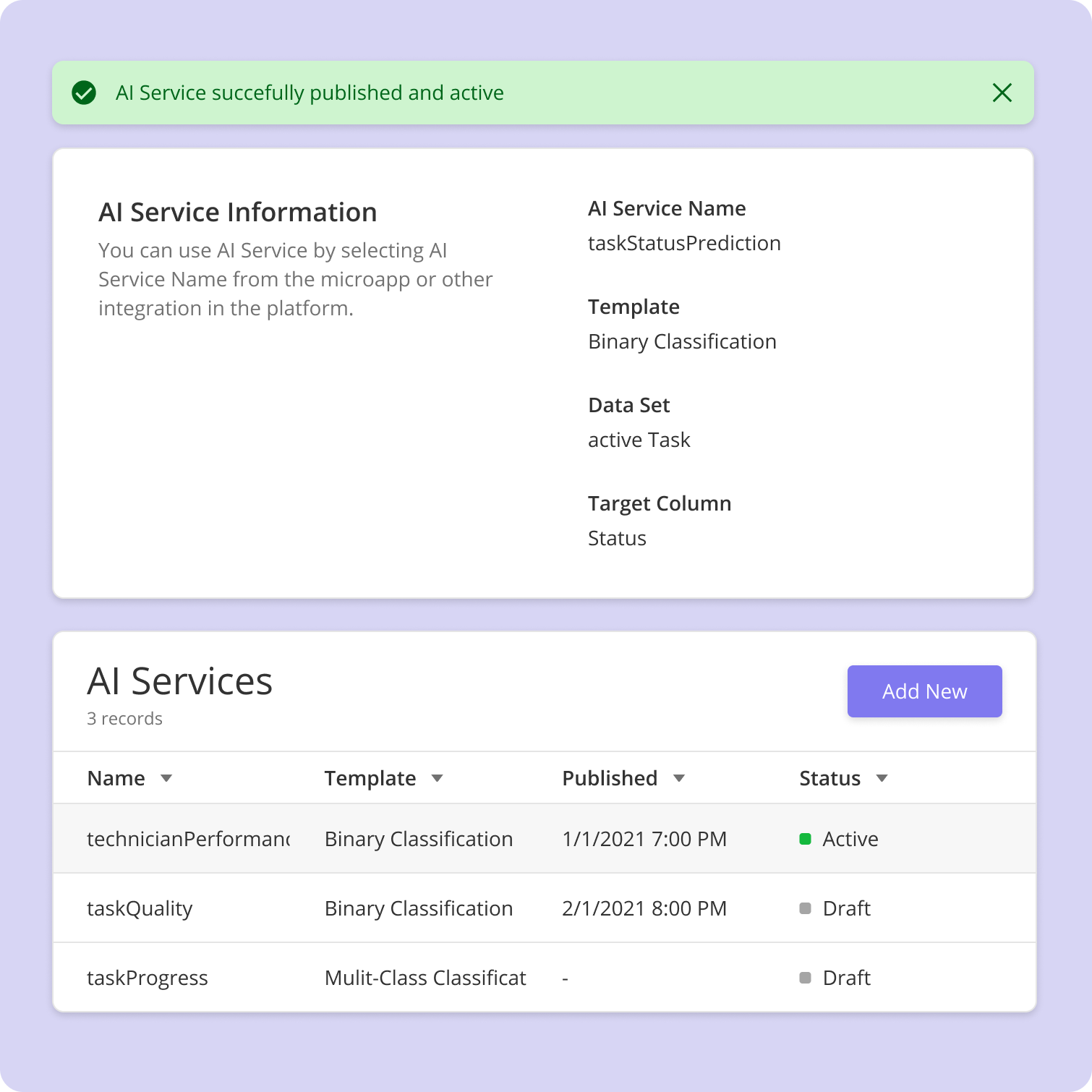
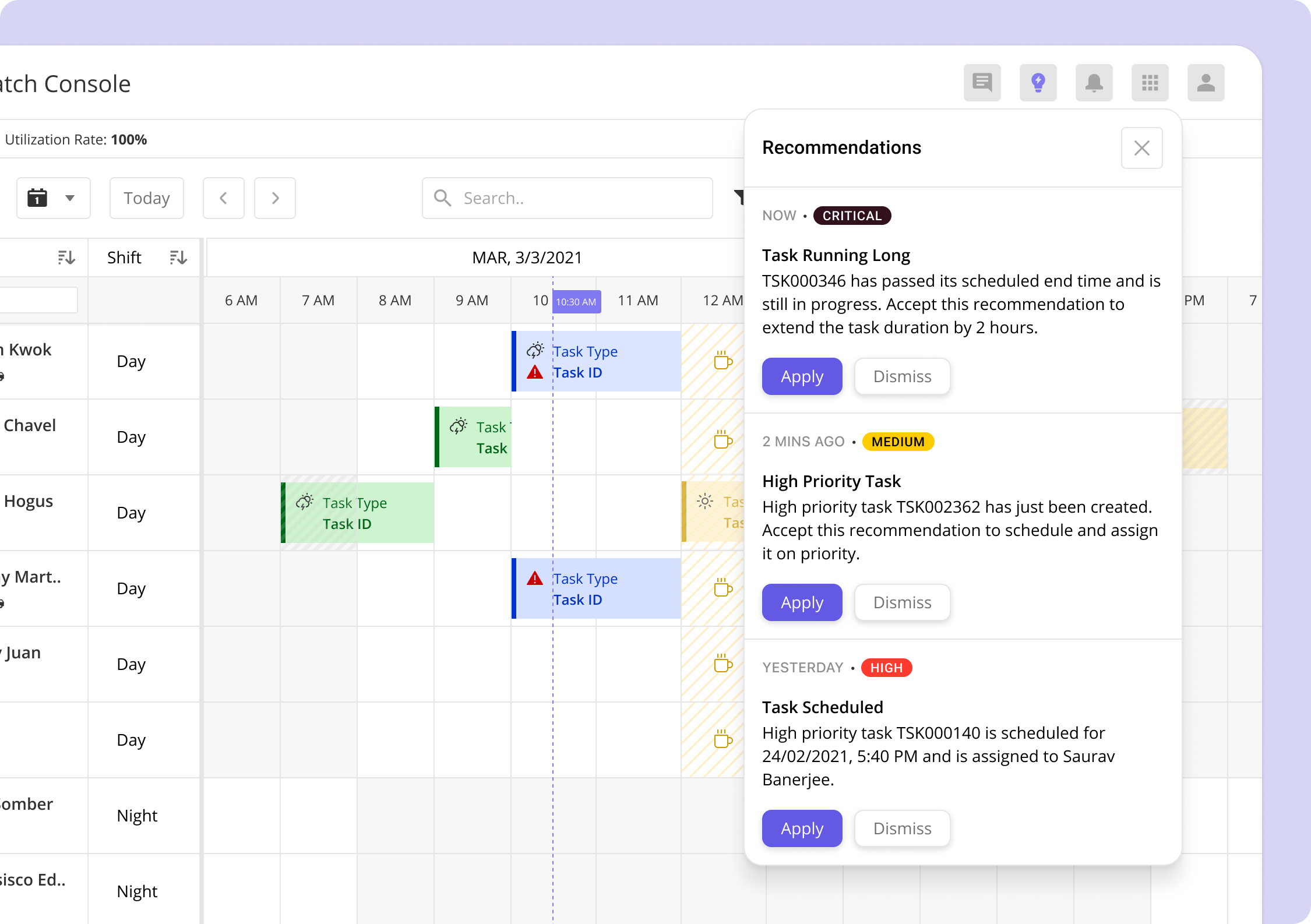
Impact and Lessons Learned
Result:
- Positive user feedback: Early adopters praised the intuitive design and the ability to experiment quickly.
- Business adoption: The tool’s ease of use led to its adoption by some Zinier clients that previously avoided automation due to perceived complexity and not trusted system.
- This tool become a strong direction and foundation for Zinier to focus on automation and machine learning.
Conclusion:
Designing the AI models builder was a exciting project that taught me the value of empathy and collaboration. The tool addressed a market need for simple AI Model builder and paved the way for Zinier to focus on automation.
This journey has influenced my approach to design, emphasizing that complex system can be simplfy by focusing on user needs and business requirment, focusing on what’s truly essential.
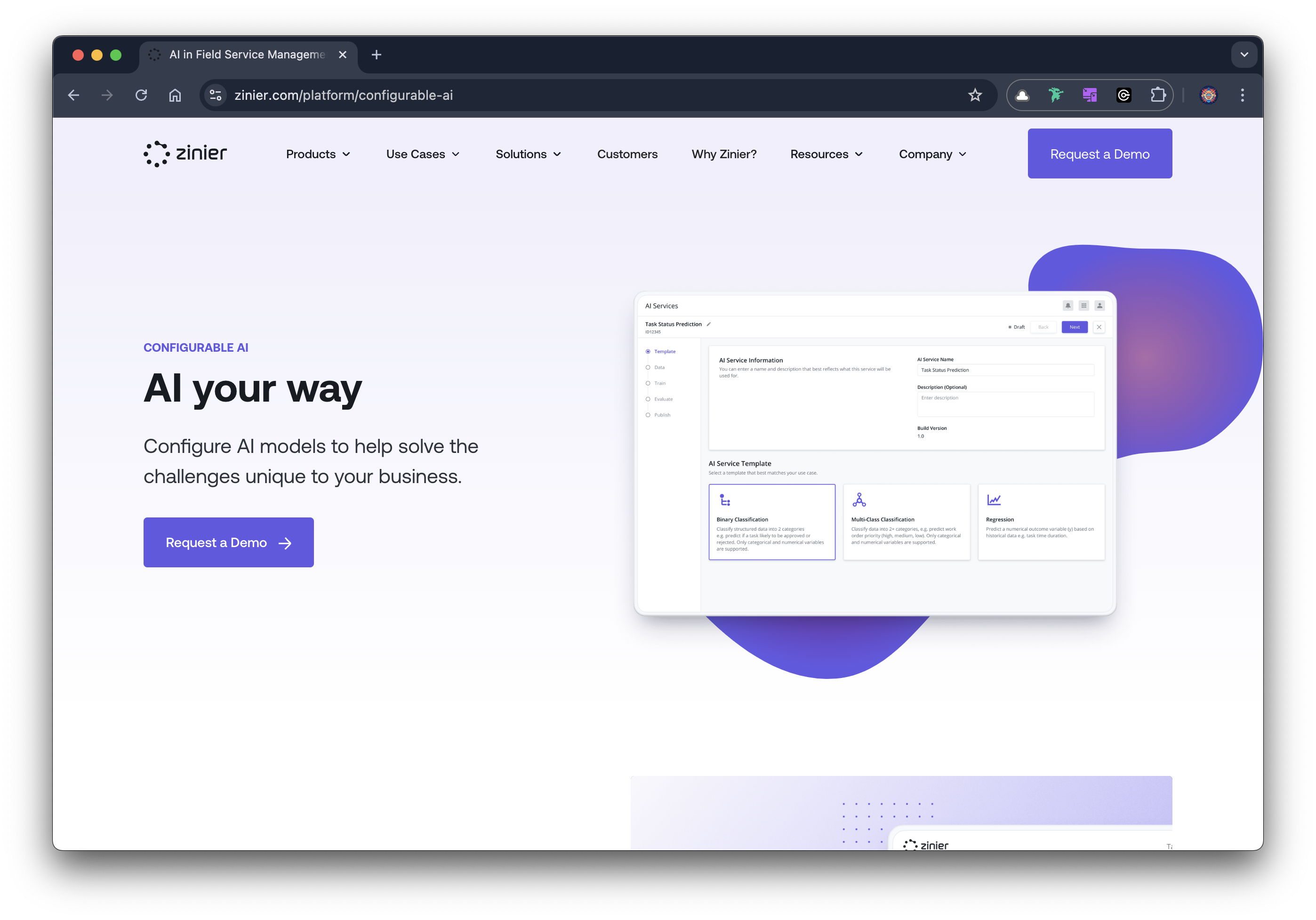
Zinier website 2025
